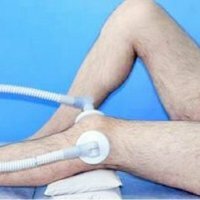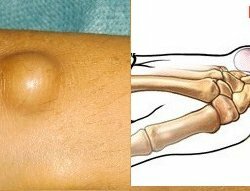Treatment of the meniscus of the discoid knee joint

The discoid meniscus is an anomaly of development in which the meniscus of the knee joint is discoid. In a normal state, menisci, as a rule, have a mesodermal origin, they differentiate from mesenchymal cells. In adult adults, the C-shaped inner meniscus usually covers 50% of the entire surface of the medial plateau( tibial) and has a fairly tight connection with the joint capsule. Meniscus in most reptiles is represented by a simple intraarticular disk-like cartilage, unshared into the outer and inner cartilaginous plates. There are several theories in the etiology of the discoid meniscus. The discoid meniscus can cause anxiety to the patient( severe pain, discomfort, restriction of the knee joint functions, etc.), so treatment of the discoid meniscus is necessary.
Treatment of the meniscus of the discoid joint
In 64% of cases, the cause of the request for help to specialists was the fact of a knee joint injury, and in the remaining 36% of cases the patients did not notice injuries in the anamnesis, but indicated the presence of minor pains, "clicks", discomfort in the areaof the knee joint.
Before the treatment of the meniscus of the discoid knee joint, its thorough diagnosis is necessary.
Differential diagnosis should be performed between: chronic post-traumatic or congenital instability of the fibulotibial proximal joint;Chronic patellar instability;Movements( abnormal) of hamstrings;also a traumatic pathology of cartilage or normal menisci. The main method of diagnosing this pathology is magnetic resonance imaging.
There are three main ways to treat the discoid meniscus. This is conservative, as well as partial, total meniscectomy, which are performed in most cases arthroscopically. The discoid meniscus is a rare anomaly of development, which requires a differentiated approach.
Conservative treatment of this knee joint meniscus. If the discoid meniscus does not disturb the function of the joint and does not bother the patient, then treatment is not required. With minor symptoms of the disease, a short period of immobilization, physiotherapy and physical activity are shown. In patients with a symptomatic course of the disease, only dynamic observation is advisable.
Surgical treatment is an arthroscopic partial resection. Type Wrisberg Ligament occurs only in the lateral meniscus. It is characterized by the presence of Wrisberg Ligament and the lack of fixation, usually to the posterior surface of the tibial plateau. Hypermobility of the meniscus of the knee joint leads to the most pronounced injuries, as well as the onset of pain syndrome.
Directed surgical treatment for partial resection of the knee joint meniscus in the area of its injuries. Patients with Wrisberg Ligament type undergo a partial resection of the discoid meniscus with additional fixation of the meniscus( posterior) part to the joint capsule for stability. By results of researches it is revealed, that partial resection of a meniscus is more effective, than total meniskectomy. Studies have shown that total meniskectomy is much more likely to lead to changes( degenerative) in the articular cartilage, and meniscectomy has a lesser risk of developing these changes. Therefore, it is necessary to do the economical resections of the meniscus
if possible. The indication for the operation of meniscactomy is a significant rupture of the paracapsular part of the meniscus( discoid), which is not subject to its suture.
It can be concluded that the method of treating this ailment depends directly on the clinic of the discoid meniscus. With minor symptoms, you can limit yourself to conservative treatment. If an asymptomatic incomplete or complete discoid meniscus is randomly detected, treatment is not performed.
In cases where surgical treatment is required, preference should be given to arthroscopic partial meniscetectomy.
The operational experience of the discoid meniscus showed that the results of partial crescent-shaped meniscectomy in 98% of cases are good and excellent.



